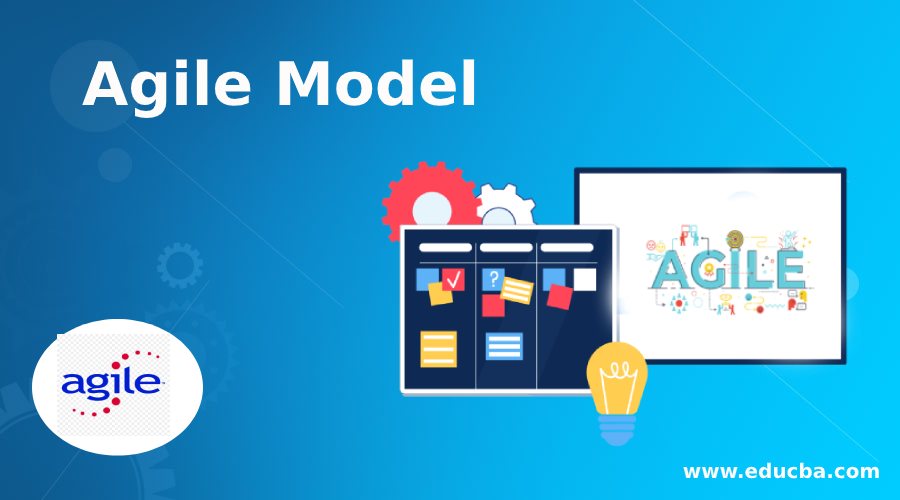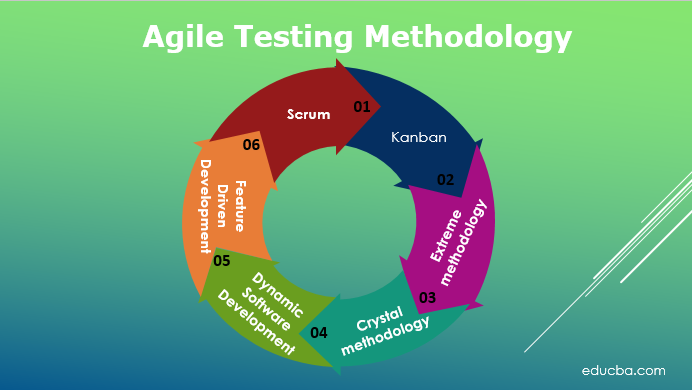
Introduction to Agile Model
In the software development life cycle, there are many approaches for developers and stakeholders. One of the very effective methods in SDLC is the Agile Model. The agile model focuses on the continuous iteration of both development and testing. The agile model process in SDLC makes it easier for developers in team interaction and gives the customer the complete idea of the ongoing project and makes any changes if required. This makes the developers make the changes as per the customer’s interaction and saves a lot of time in rework. As this approach works hand in hand in development and testing, the developers and testers work together.
Agile Testing Methodology
Agile testing uses different types of methods based on development style.
Below listed are agile testing methodologies:
1. Scrum
Whenever there is a rapid change in the project, scrum is used in the Agile model. Scrum mainly focuses on customer delivery in a continuous iterative model.
Each work in a team is divided into sprints; scrum-based sprint cycle consists of:
- Sprint review
- Sprint retro
- Sprint planning
- Daily scrum
For a sprint planning stage, a sprint plan meeting is held every day or a week as per requirement and development plans using user stories. A project retrospective Meeting follows this. After the implementation stage, along with daily scrum, a sprint review meeting is held. The scrum team consists of stakeholders, scrum masters, project owners, and Scrum team members.
2. Kanban
Kanban is an incremental process. It fulfills all the 12 different principles of agile methodologies. The main aspect of Kanban is the transparency in the software development cycle. Kanban boards, tools are used for project traceability.
This board is used in a 3 step process:
- To do
- In progress
- Done
To track any work in a project, the cards are used on the board to represent the state of every work. This gives a clear picture of the workflow and progress of a team.
3. Extreme Methodology
The extreme methodology is one of the most popular and effective development frameworks in the Agile development model, which says making big changes won’t work in a go, so start right from bits for the effective change in treating any problem. This software development model uses frequent releases and improves software quality. Also, this methodology rapidly makes changes as per the customer’s requirements. Therefore, extreme programming methodology is very much applicable in small projects and also for the newer technology.
XP software development model involves a few steps:
- Coding
- Design
- Test
- Feedback
This is an iterative process that involves frequent releases based on 12 principles. First, always design a code that can be implemented and easily extended based on the application. So that in future any changes to be fine is easy and takes less time. Feedback plays a vital role, based on feedback from customers, team, and system. Here communication is the key factor. The frequent is communication, the better is the quality product with productive time.
4. Crystal Methodology
Crystal methodology is known for less documentation and project review overhead. Hence this is also known as “lightweight methodology”. The crystal method is not like previous methods; it does not have a particular approach or set rules to follow. Instead, crystal depends on many factors in the project, which are categorized by different colors.
The crystal method family consists of the different methodologies: Crystal Clear, Crystal Yellow, Crystal Orange, Crystal Orange Web, Crystal Red, Crystal Maroon, Crystal Diamond, and Crystal Sapphire. The type of crystal methodology depends upon the team size and project environment.
5. Dynamic Software Development Method (DSDM)
DSDM was formed in 1994 for rapid software development. This framework included 4 stages: Planning, Managing, Executing, and scaling in an agile environment. This framework is based on an 80-20 basis. This means giving focus on 80% of usefulness will take 20% of the time to implement.
The DSDM iterations are based on MSCW process development:
- M – Must have requirements
- S – Should have if at all possible
- C – Could have but not critical
- W – Won’t have this time, but potentially later.
6. Feature Driven Development (FDD)
Another software of an agile model process is FDD: Feature Driven Development for a larger team implementation. Jeff De Luca develops this model. The iterations here include Design and Build by features.
FDD is based on 8 principles:
- Domain object modelling
- Developing by feature
- Class ownership
- Feature teams
- Inspections
- Configuration management
- Regular builds
- Visibility of progress and results
7. Lean Software Development
Lean is all about giving valuable services to customers using the holistic approach. The basic concept of Lean software development is reducing waste.
It is based on 7 basic principles, which are as listed below:
- Eliminate waste
- Create learning
- Decide late
- Delivery fast
- Team empowerment
- Build integrity
- Optimize whole
The practices are very similar to agile sprint development, which is an iterative process. This process also helps in building quality before the debt is found, proceeding to validate it at the first step, and then to start. Decide the flexible Architecture to begin so that it meets the customer’s requirements with quality constraints. This optimizes the whole value stream.
Conclusion – Agile Model
The agile model is successful than the traditional SDLC model because it works with both development and testing teams. This will improve quality. Since this model consists of innovative practices which involve sprint planning, dashboard planning, and stand up meetings, this collaborates with customer’s, organizations and vendors. Including the customer’s in the developing phase will give them confidence in the quality product. Agile is flexible, hence makes it easier for the developers, stakeholders, and testers for implementation.
Recommended Articles
This has been a guide to Agile Model. Here we discussed the concept and different types of agile testing methodology in the Agile Model process. You can also go through our other suggested articles to learn more –


